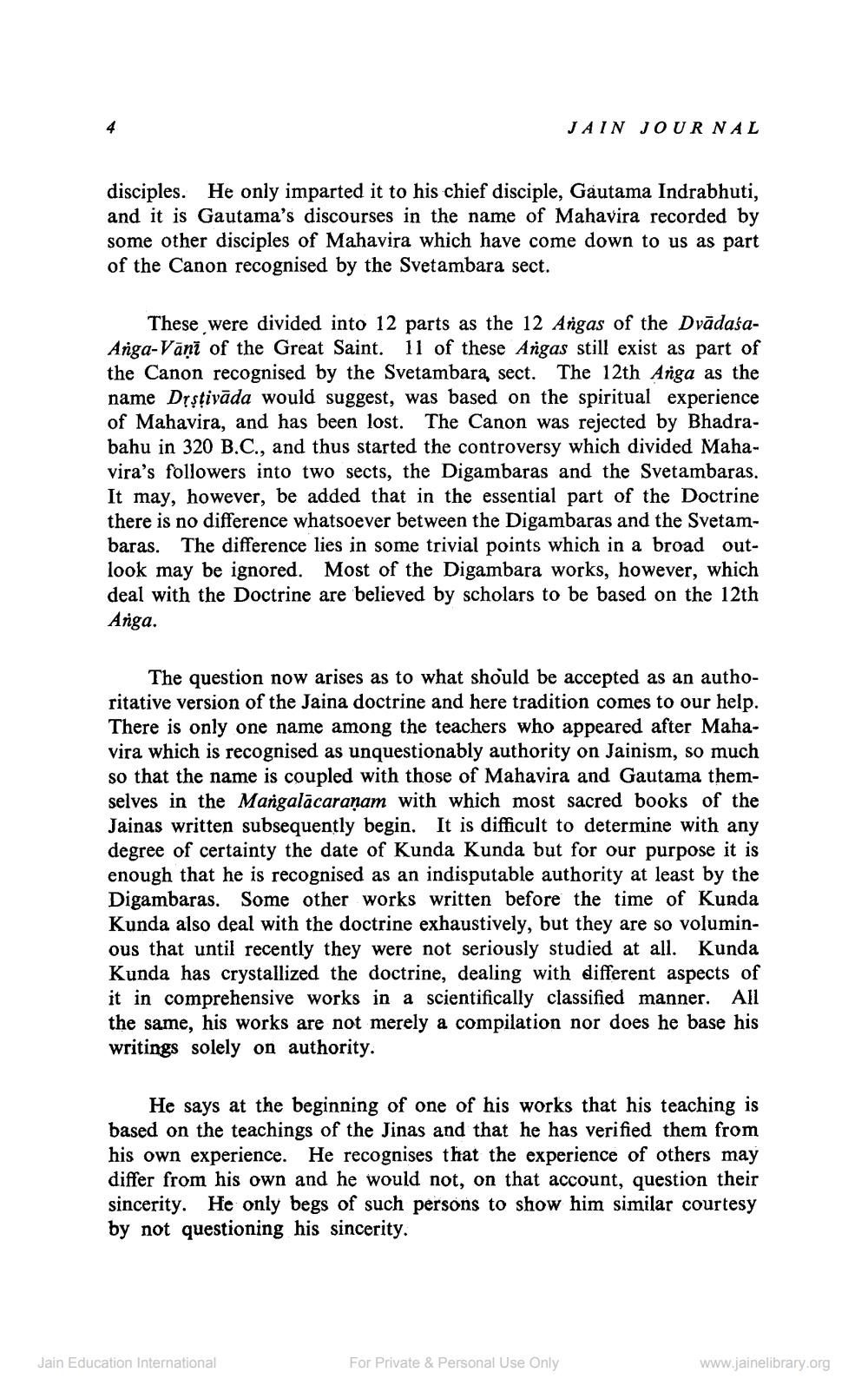________________
JAIN JOURNAL
disciples. He only imparted it to his chief disciple, Gautama Indrabhuti, and it is Gautama's discourses in the name of Mahavira recorded by some other disciples of Mahavira which have come down to us as part of the Canon recognised by the Svetambara sect.
These were divided into 12 parts as the 12 Angas of the DvādaśaAnga-Vānī of the Great Saint. 11 of these Argas still exist as part of the Canon recognised by the Svetambara, sect. The 12th Anga as the name Drstivāda would suggest, was based on the spiritual experience of Mahavira, and has been lost. The Canon was rejected by Bhadrabahu in 320 B.C., and thus started the controversy which divided Mahavira's followers into two sects, the Digambaras and the Svetambaras. It may, however, be added that in the essential part of the Doctrine there is no difference whatsoever between the Digambaras and the Svetambaras. The difference lies in some trivial points which in a broad outlook may be ignored. Most of the Digambara works, however, which deal with the Doctrine are believed by scholars to be based on the 12th Arga.
The question now arises as to what should be accepted as an authoritative version of the Jaina doctrine and here tradition comes to our help. There is only one name among the teachers who appeared after Mahavira which is recognised as unquestionably authority on Jainism, so much so that the name is coupled with those of Mahavira and Gautama themselves in the Mangalācaranam with which most sacred books of the Jainas written subsequently begin. It is difficult to determine with any degree of certainty the date of Kunda Kunda but for our purpose it is enough that he is recognised as an indisputable authority at least by the Digambaras. Some other works written before the time of Kunda Kunda also deal with the doctrine exhaustively, but they are so voluminous that until recently they were not seriously studied at all. Kunda Kunda has crystallized the doctrine, dealing with different aspects of it in comprehensive works in a scientifically classified manner. All the same, his works are not merely a compilation nor does he base his writings solely on authority.
He says at the beginning of one of his works that his teaching is based on the teachings of the Jinas and that he has verified them from his own experience. He recognises that the experience of others may differ from his own and he would not, on that account, question their sincerity. He only begs of such persons to show him similar courtesy by not questioning his sincerity.
Jain Education International
For Private & Personal Use Only
www.jainelibrary.org




